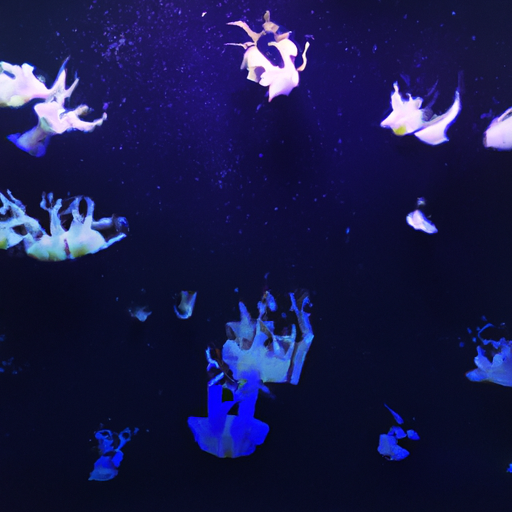Bioluminescence: A Light in the Depths of the Ocean
There is a dazzling spectacle of light choreography hiding beneath the ocean's surface, a phenomena known as bioluminescence. Thriving below the reach of sunlight, the dark waters of the ocean depths are far from lifeless, offering an unexpected show of lights, colors and shadows. This electrifying display is not for our enjoyment though, but a survival technique practiced by various deep sea creatures to navigate a harsh and challenging environment.
What is Bioluminescence?
Bioluminescence is light produced by a biochemical reaction within a living organism. It occurs when a substance called luciferin comes into contact with oxygen. The reaction is often catalyzed by an enzyme, luciferase, resulting in a remarkable glow. This light show is not only beautiful but also crucial for survival in the extreme conditions of the deep sea.
Sea Creatures with Bioluminescence
More than 75% of deep sea organisms rely on bioluminescence. Among the most famous are Anglerfish, which use their illuminated lure to attract prey. Jellyfish-like organisms known as comb jellies create a a rippling display of color as the cilia on their bodies catch the light. Squid eject luminescent ink to confuse their predators while they escape. Indeed, the variety of marine bioluminescent organisms is as deep as the sea itself, and our knowledge is barely scratching the surface.
Bioluminescence Impact on Deep Sea Life
Bioluminescence shapes the deep sea life. It can help creatures find or attract mates, scare away or confuse predators, and lure prey. For instance, the anglerfish uses bioluminescent lures to bring prey within reach of their terrifying jaws. Some species, like the hatchet fish, use bioluminescence to hide from predators by matching the light from above, making them indistinguishable from their surrounds, a phenomenon known as counter-illumination.
Bioluminescence and Human Applications
Understanding bioluminescence also has implications beyond deep-sea research. Its potential value in human fields like medicine, engineering, and technology is immense. For instance, bioluminescent proteins have been used in medical research to monitor the growth of tumors or track the spread of diseases within the body. In technology, bioluminescence could inspire more efficient lighting or computing systems.
Conclusion
Much of the deep sea remains a mystery to scientists, but the study of bioluminescence brings them one step closer to understanding it. As research strides forward, the wide-ranging role of bioluminescence within the deep sea ecosystem, as well as its potential implications on the surface, continues to amaze and inspire.


















Comments
Leave a Comment